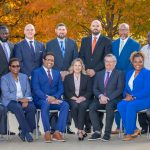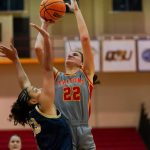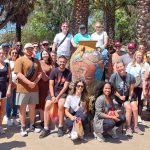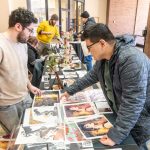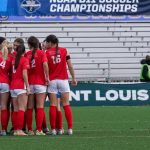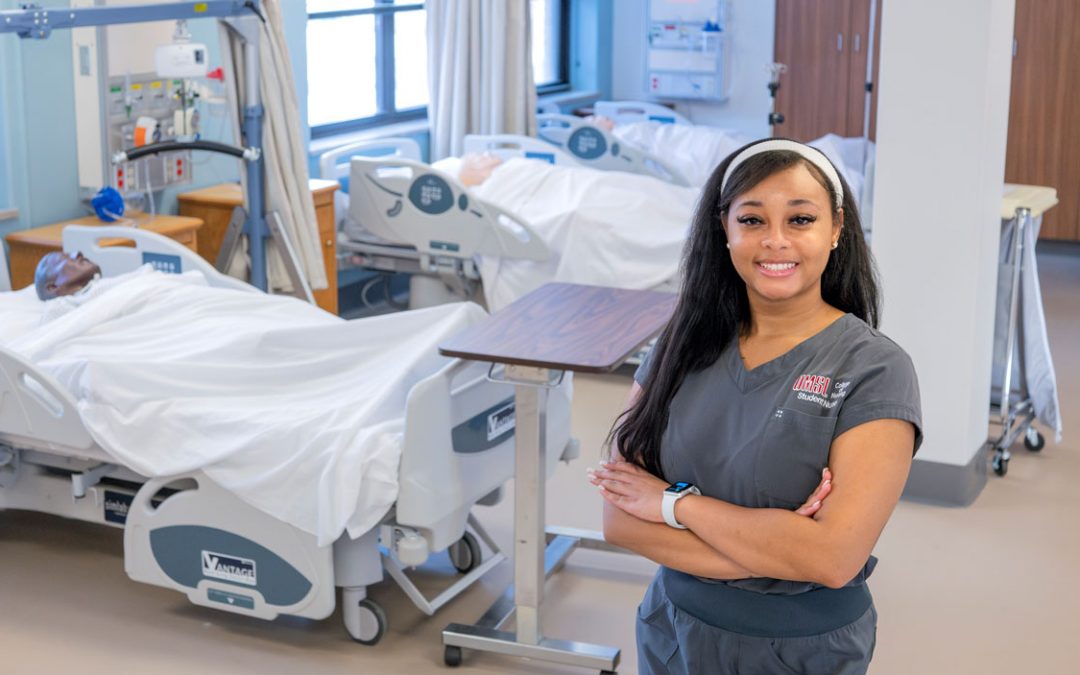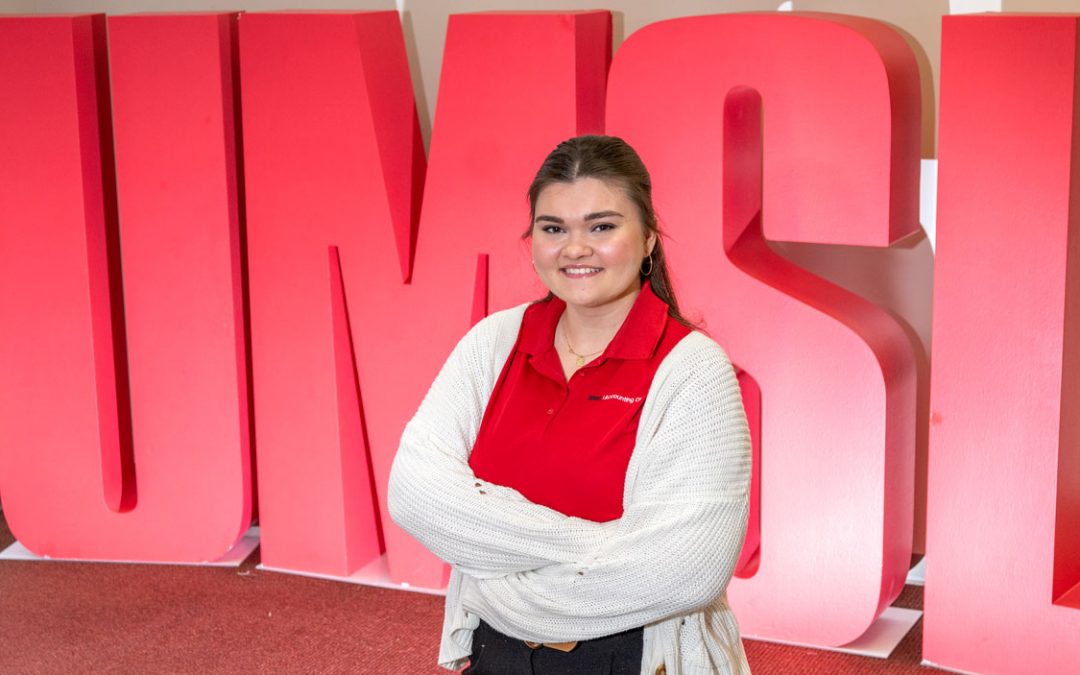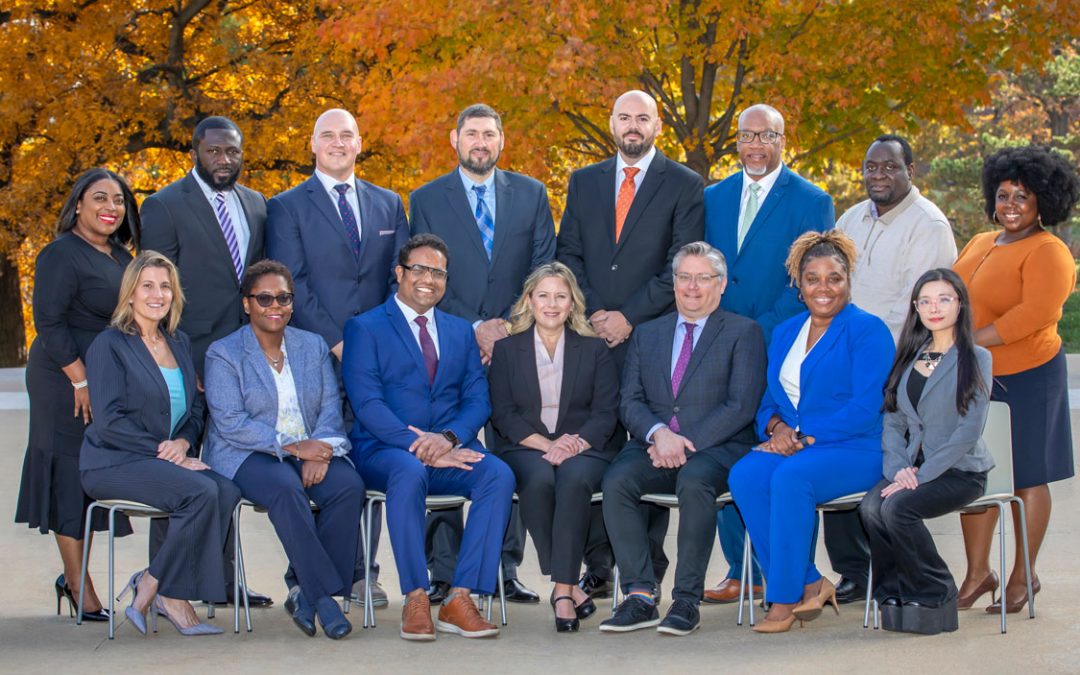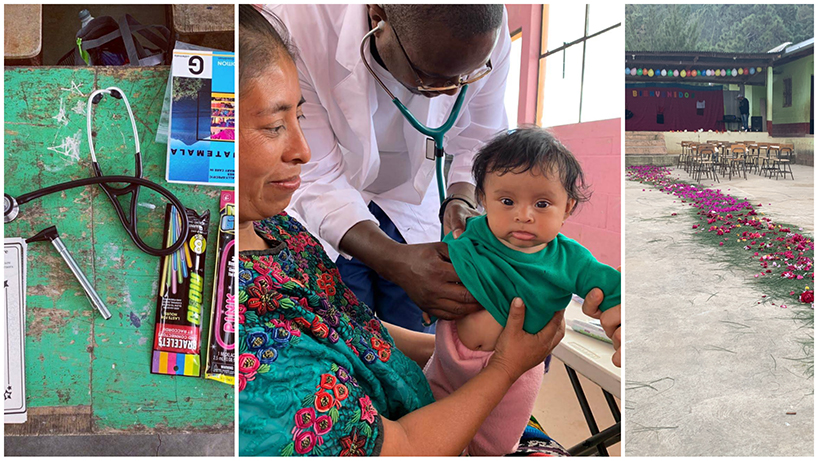
Left: Students and faculty from the College of Nursing brought toys along with medical supplies. Center: DNP student Norman Njihi (center) examines a young child in El Quimal La Joya. Right: A pine bough and rose petal path led to the schoolhouse, which served as a makeshift clinic. (Photos courtesy of Natalie Murphy)
Norman Njihi had already experienced a long morning of seeing patients when the translator suggested it would be a good moment for him to take his lunch break.
One more, Njihi insisted, and the translator called for the next in line.
It was a family of six.
“I was expecting one,” the University of Missouri–St. Louis doctor of nursing practice student recalls, laughing. “Should I start with the youngest, or do I start with the oldest? The dynamics demanded a lot of time management, and of course, there’s translation, so that takes time. Also, learning, if one child has this issue and the second child has this issue, you know what, you treat every single child.”
Learning how to care for families rather than individuals was just one rare challenge Njihi and 11 of his College of Nursing peers faced this January in Guatemala. The trip was the inaugural excursion in what will be biannual study abroad opportunities.
Every third year, the College of Nursing will return to the same villages and serve six communities in total.
Organized by Interim Associate Dean for Academic Programs Natalie Murphy in conjunction with the nonprofit Nursing Heart, Inc., the student nurses visited the indigenous communities of El Quimal La Joya and Alotenango, where they set up primary care and women’s health clinics.
They served more than 550 patients, including three treated with cryotherapy for precancerous cervical lesions. During the weeklong experience, students earned three credits and 40 residency hours toward their degrees.
Assistant Teaching Professor Lisa Merritt accompanied Murphy, who, thanks to previous medical trips to Guatemala, knew how to prepare. She budgeted some of the cost of supplies into the trip fee, took donations and paid the remainder herself. Into their collective 27 suitcases, the group packed medication, basic equipment and supplies, entertainment and gifts for the children and one plastic princess crown, which Murphy wore until she bestowed it on her final patients, a mother and daughter.
“I left behind a huge suitcase full of probably 75 pounds of medication,” Murphy says. “Mostly ibuprofen, Tylenol and vitamins. The pharmacist literally hugged me and cried because they would have meds for a couple weeks.”
In both villages, residents invited the student nurses into their homes, shared stories, cooked traditional lunches and performed elaborate welcoming and farewell ceremonies. In El Quimal La Joya, which had never before been visited by medical providers, the group arrived to find that the community had created a pine bough and rose petal path leading to the site of the makeshift clinic – the schoolhouse.
“It was really beautiful,” psychiatric nurse practitioner student Rebecca Palmer says. “Whenever we were leaving, they had goodbye ceremonies for us, and they were just so thankful and grateful to have the access to the medical care those couple of days.”
The 10 DNP and two RN-to-BSN students also spent two days in Antigua, where they recovered from the flight, explored and learned how cervical cancer lesions turn white when painted with a diluted vinegar solution. This screening technique was one of several back-to-basics tests the students mastered during the following days. Another was examining the conjunctival sac of the eye, which appears pale in anemic patients.
Learning how to diagnose patients without the ease of modern testing was part of what Murphy hoped her students would gain from the experience.
“They learn to depend on their own assessment skills, and you watch their confidence grow over the week,” she says. “It’s fun to watch them struggle through seeing four patients on Monday and be able to see 20 on Friday and do so in a really organized and effective way. It’s a neat thing to watch them grow.”
Aside from pelvic exams and cervical cancer screenings, the nurses treated high blood pressure, diabetes, skin infections, cerumen-impacted ears, old cooking fire injuries, malnutrition, parasites, anemia and more. They also assisted community members suffering from post-traumatic stress disorder due to a volcano eruption in June.
The lack of preventive care and services for Guatemala’s under-resourced communities reminded Njihi of rural areas of Kenya, his birthplace, and the experience reinforced his desire to do medical missionary work. For Palmer, seeing the Guatemalans working to improve care within their country had a profound but opposite influence.
“There was a lot of personal growth that came from this trip,” she says. “It switches you out of the ‘I want to go abroad and help people’ and refocuses you on underserved populations back at home.”
According to Murphy, nursing students who study abroad are more likely to work with underserved populations in the U.S., have expanded attitudes on diversity, learn about culture and cultural humility and increase their skills as practitioners. She hopes to include College of Optometry students on future trips, which will teach all involved how to be effective on an interdisciplinary team.
“Another benefit for students is that the trip makes them remember why they became nurses,” she says. “You can get overwhelmed with practice here. That was the thing I heard all week long, ‘This has restored my soul. I am so excited to be a nurse again.’”
This story was originally published in the spring 2019 issue of UMSL Magazine. If you have a story idea for UMSL Magazine, email magazine@umsl.edu.





